Dense active systems
Mme Julia Yeomans
Department of Physics, Oxford
Active systems, such as bacterial suspensions and the cytoskeleton, driven by molecular motors, provide their own energy and hence operate out of thermodynamic equilibrium. Continuum models describing active systems are closely related to those describing liquid crystal hydrodynamics, together with additional ‘active’ stress terms. I shall discuss recent results from simulations of dense active nematics and their relevance to cell motility and cell division.
Durée :
The Physics of Living Matter - European Summer School
Du au
Amphi WEISS, Strasbourg
Laboratory of Cell Physics
The European Summer School of the University of Strasbourg is a prestigious one-week meeting of students from all over Europe. They present their research projects and attend lectures on some of the most recent topics in physics presented by internationally known scientists. The 2016 edition of the school is organized by the faculty of physics and engineering of the University of Strasbourg together with the Collaborative Research Centre 1027 of the University of the Saarland.
Cell Physics has emerged as a new branch of Physics during the last decade. Quantitative experiments that address the cellular dynamics can nowadays be performed directly in the living cell, tissue or organism. This enables the investigation of biological systems using a typical physicist’s approach, including a tight interaction between models and experiments. Because living matter exhibits new, complex out-of-equilibrium properties, cell physics has received a lot of interest from theorists in terms of model building.
New aspects have been developed in biology, concerning topics such as collective effects, chirality, quantum biology, as well as the origin of life. We now witness the appearance of a new generation of scientists that are trained in Physics as well as in Biology, who know about theory as much as about experimental work. The recently created Cell Physics Master in Strasbourg University is based on this scientific direction. The scope of the school covers recent developments in cell physics with a central emphasis on their biological relevance.
Thème(s) : Physique Sciences
Sciences fondamentales
Producteur : Université de Strasbourg
Réalisateur : Université de Strasbourg
Opening and Welcome
OUT-OF-EQUILIBRIUM PHYSICS: Out of equilibrium physics
Intro: OUT-OF-EQUILIBRIUM PHYSICS IN BIOLOGY
Karsten Kruse
Theoretische Biologische Physik, Universität des Saarlandes
Cell Motility: Cell Motility and Active Matter
Single Molecule Studies on Myosin Motors
Mme Claudia Veigel
Ludwig-Maximilians-Universität München
Many types of cellular motility are based on the myosin family of motor proteins. There are now known to be at least 35 different classes of myosins, involved in intracellular transport processes, cytokinesis, muscle contraction, exo- and endocytosis or even signal transduction in vision or hearing. The ability to coordinate the timing of motor protein activation lies at the very centre of this wide range of cellular motile processes. Using a combined approach of recombinant protein expression and single molecule techniques including optical tweezers we study the basic mechanisms of activation, force production and movement of these molecular machines at the single molecule level. In this talk we will report on our recent studies on myosins interacting with lipids and transporting cargo, such as cytoplasmic vesicles, over micrometer distances along the actin cytoskeleton in the cell.
Dense active systems
Mme Julia Yeomans
Department of Physics, Oxford
Active systems, such as bacterial suspensions and the cytoskeleton, driven by molecular motors, provide their own energy and hence operate out of thermodynamic equilibrium. Continuum models describing active systems are closely related to those describing liquid crystal hydrodynamics, together with additional ‘active’ stress terms. I shall discuss recent results from simulations of dense active nematics and their relevance to cell motility and cell division.
Systems Biology
Distinguishing deterministic from stochastic processes in feedback systems
M. Attila Becskei
Biozentrum University of Basel
The activity of cellular regulatory networks is jointly governed by deterministic nonlinear system dynamics and noise. The prediction of system behavior is facilitated if the system is described first in deterministic terms, which is then supplemented with noise. However, it is often difficult to measure them separately. This is particularly true for positive feedback systems, which commonly underlies bistable cell fate determination. Both noise and deterministic nonlinearities jointly determine how fast the transition between two cell fates is. To separate the underlying stochastic and deterministic effects, we opened feedback loops. The resulting open loop function revealed the deterministic components; in particular how promoter cooperativity and protein dimerization shape nonlinear deterministic response. Next we measured noise using single molecule detection of RNA molecules in the cell. Combining the two measurements, we could predict the transition rates between cell fates. They indicate that having low molecule number accelerates the transitions while protein dimerization stabilizes each cell fate. Thus, through bypassing the effect of noise, feedback opening can help distinguish the molecular basis of deterministic and stochastic mechanisms that control cell fate determination and reprogramming.
Science discussion : Questions to all lectures this morning
Daniel Riveline
UNISTRA
Here the students can ask for more explications on specific topics concerning all lectures.

